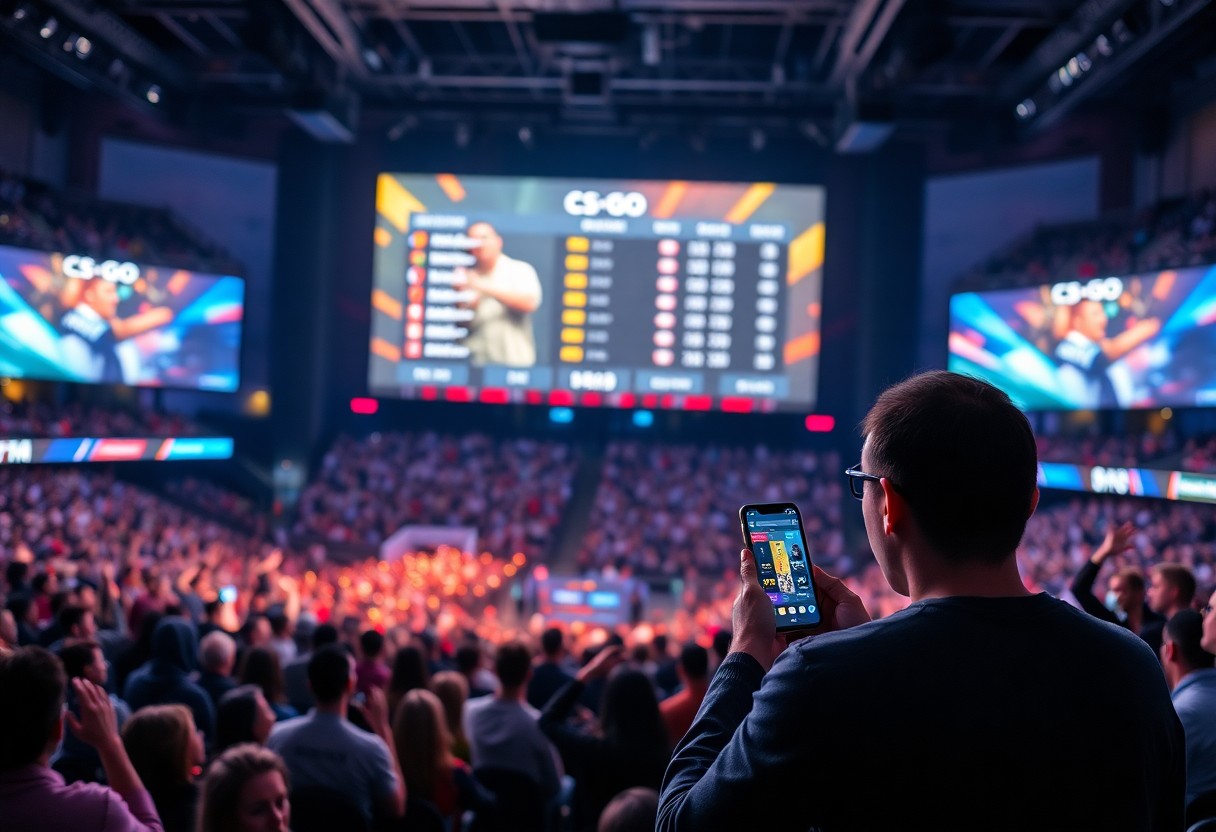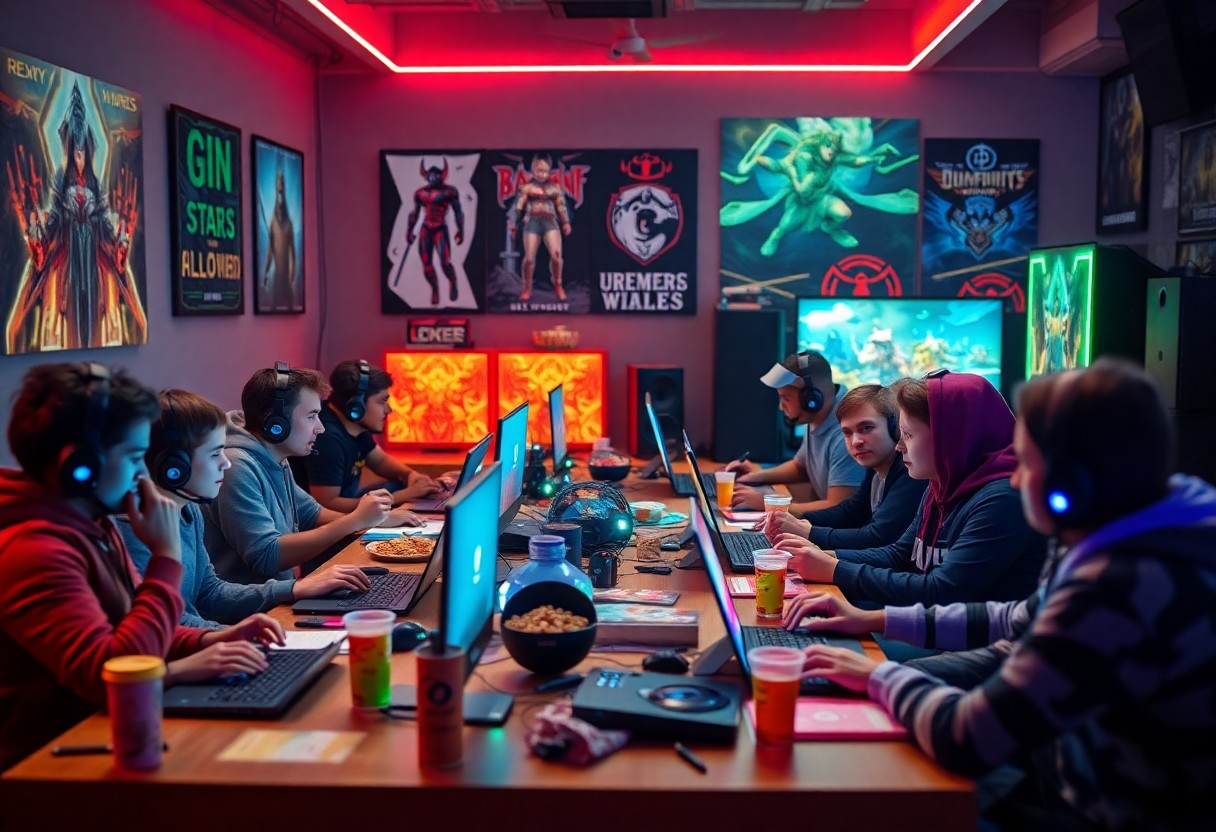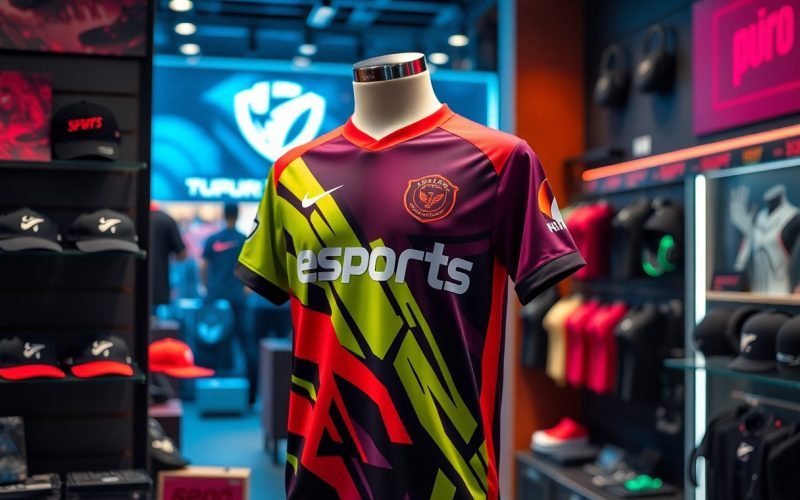You may be surprised to learn that LAN (Local Area Network) gaming is experiencing a resurgence in the gaming community. With advancements in technology and a growing desire for in-person interactions, players are returning to the roots of multiplayer gaming. Events like LAN parties and gaming tournaments are gaining popularity, create vibrant social experiences and fostering a sense of community among players. This article will explore the factors driving the revival of LAN gaming, the benefits it offers, and what the future may hold for this nostalgic gaming tradition.
The Evolution of LAN Gaming
For many gaming enthusiasts, Local Area Network (LAN) gaming represents a transformative moment in the gaming landscape, fostering social interaction and competition among players. What started in the 1980s as small gatherings where players connected computers via direct cables and simple topologies has evolved into large tech-driven events. These gatherings laid the groundwork for the bustling LAN party culture that flourished in the 1990s and early 2000s, a time when games like “Quake,” “Counter-Strike,” and “StarCraft” became benchmarks for multiplayer engagement. As internet connectivity improved and online gaming surged in popularity, LAN gaming appeared to decline in favor of remote gameplay, yet it never fully vanished from the gaming scene.
Historical Context
One cannot discuss the evolution of LAN gaming without acknowledging its roots in the early days of computing. Initially, LAN setups were exclusive to tech-savvy individuals who took advantage of emerging technologies like Ethernet and parallel ports to create multiplayer experiences. As more games began to support LAN features and interest grew, organized LAN parties became noteworthy events, often held in community centers or large basements. The sense of camaraderie and competition at these gatherings laid the foundation for a lasting culture that still influences the gaming world today.
Technological Advancements
One of the key factors that influenced the landscape of LAN gaming was the rapid advancement of technology over the years. The introduction of high-speed internet, better networking equipment, and more powerful gaming consoles made it easier for players to join and host LAN parties. Moving from simple local setups, players now invest in high-quality routers and switches to enhance their gaming experience. Furthermore, as hardware capabilities have increased, game developers have created more complex, graphically rich multiplayer games that are ideal for LAN play, providing the perfect blend of cooperation and competition among friends.
Evolution continues to play a significant role in the resurgence of LAN gaming, as recent trends show a growing interest in in-person gaming experiences, driven by nostalgia and the desire for social interaction. Events like LAN tournaments and gaming festivals are becoming increasingly popular, reminiscent of the golden era of LAN parties. The hybrid model of competitive gaming also supports LAN events as they provide a unique opportunity for players to experience their favorite games in a more immersive environment, reinforcing the bonds formed within the gaming community.
The Current Landscape of LAN Gaming
There’s a notable resurgence in the popularity of LAN gaming, driven by a combination of technological advancements and cultural shifts. The closure of venues during the pandemic has spurred a desire to reconnect face-to-face, leading to an increased interest in local multiplayer experiences. As competitive gaming continues to evolve, the charm of in-person interactions is becoming harder to ignore for both casual and dedicated gamers alike. LAN setups are gaining traction as players seek out immersive experiences away from their online worlds.
Rise of Esports Events
To understand the current landscape of LAN gaming, one must first look at the explosive growth of esports events. These organized competitions have become a staple in the gaming industry, attracting millions of viewers and participants from around the world. Many of these tournaments are hosted in large venues that cater to live audiences, allowing competitors to engage in thrilling face-offs while fans cheer them on. This trend has led to the establishment of more local esports events, which pave the way for aspiring players to showcase their talents in comfortable, familiar settings.
Growth of Local Gaming Communities
Behind this revival of LAN gaming is the flourishing of local gaming communities that unite players based on shared interests. These groups often host regular meetups that facilitate not only competition but also camaraderie, creating lasting friendships through gaming experiences. Local arcades, cafés, and dedicated gaming lounges have embraced this culture, offering the perfect environments for gamers to socialize and improve their skills together. This grass-roots approach helps foster a sense of belonging that online gaming sometimes lacks.
Rise of local gaming communities has been instrumental in reigniting interest in LAN gaming, as these environments provide a platform for players to connect on a personal level. Many gamers are gravitating towards these gatherings, drawn by the opportunity to play their favorite titles in a shared space, sparking lively discussions and friendly rivalries. This phenomenon not only amplifies the gaming experience but also helps cultivate a vibrant ecosystem, where players can learn from one another and elevate the overall landscape of gaming in their areas.
Factors Contributing to the Resurgence
Even as the digital landscape continually shifts, several factors are contributing to the resurgence of LAN gaming. Enthusiasts are rekindling their passion for classic multiplayer experiences that encourage face-to-face interactions. In addition, a revival of interest in retro games, coupled with advancements in gaming technology, has seen a resurgence in LAN parties and local multiplayer events. Key factors include:
- The growth of indie game development
- The nostalgia associated with traditional LAN experiences
- Increased accessibility of robust gaming hardware
- A community-driven focus on social gaming
Assume that these factors collectively ignite a renewed interest in cooperative and competitive gaming, fostering a sense of camaraderie that transcends the confines of individual screens.
Accessibility of Gaming Hardware
Across the gaming landscape, accessibility to quality gaming hardware has greatly improved. The evolution of technology has made high-performance PCs and consoles more affordable and widely available. As a result, more players can invest in the equipment necessary to host and participate in LAN gaming events. Furthermore, the increased availability of mobile gaming devices has allowed gamers to bring their experiences straight into social spaces, whether it’s at home, a café, or a gaming convention.
The Role of Social Interaction
Any gaming enthusiast understands the importance of social interaction in enhancing the overall gaming experience. LAN gaming fosters a sense of community that online gaming may struggle to replicate. It brings friends, families, and even strangers together in a shared environment to collaborate or compete, creating memorable moments. This return to in-person camaraderie is rooted in our innate desire for connection and engagement, which can sometimes feel lacking in a purely digital context.
This social element is not just about friendly competition or collaboration; it’s also about creating an atmosphere that encourages communication and bonding over shared interests. LAN parties often foster discussions, banter, and teamwork that online gaming platforms cannot fully capture. The atmosphere of excitement and the thrill of gaming in real-time together can enhance friendships and inspire new connections, further solidifying the resurgence of LAN gaming as an engaging and valuable experience.
Challenges Facing LAN Gaming
After experiencing a surge in popularity, LAN gaming is now faced with several challenges that could hinder its revival. A shifting landscape in the gaming community has created hurdles that enthusiasts must navigate. While the nostalgic pull of local network gaming remains strong, the convenience and accessibility of online gaming have dramatically transformed how players engage with their favorite titles. The evolution of gaming technology has led to vast improvements in online infrastructures, making it easier to play with friends, regardless of location. This has inadvertently placed LAN gaming on the backburner, as players gravitate towards more flexible solutions that require less logistical coordination.
Competition from Online Gaming
An undeniable challenge for LAN gaming lies in the fierce competition posed by online gaming platforms. Many gamers now prefer the ease of accessing multiplayer experiences from the comfort of their own homes, often tapping into a plethora of global servers. This shift has diminished the appeal of LAN events, which often demand meticulous planning and require participants to travel to specific locations. Furthermore, with advancements in online matchmaking and communication technologies, players can effortlessly join games with friends or strangers, making the social aspect of gaming far more accessible than ever before.
Infrastructure Requirements
With LAN gaming, there are specific infrastructure requirements that can pose obstacles for implementation. Setting up a LAN party generally entails a considerable amount of equipment, including routers, switches, and a reliable internet connection. Players must ensure their hardware is compatible and that there is sufficient bandwidth to accommodate multiple devices simultaneously. This can be a logistical challenge, especially for larger gatherings where many players want to connect and play together seamlessly. The necessity for physical space to host events can also present limitations, as not everyone has the means to set up such gatherings in their homes.
But it’s not just about the equipment; location plays a significant role in facilitating LAN gaming. The host must consider the physical layout of the space, as well as power supply and cooling solutions, to maintain a comfortable environment during long gaming sessions. For those who aim to attract a larger crowd, finding a venue that meets these requirements can be an uphill battle. As a result, many gamers can find the idea of hosting or attending LAN events to be more trouble than it’s worth, making online gaming a more appealing alternative.
Case Studies: Successful LAN Events
Now, examining the phenomenon of LAN gaming, it’s evident that several events have successfully ushered in a renaissance for in-person gaming experiences. Notably, many tournaments and community-driven gatherings have demonstrated a heightened interest in LAN setups. Below are some exemplary case studies highlighting the popularity and resurgence of these events:
- DreamHack: Originating in 1994, this festival has evolved into one of the largest LAN events worldwide, with over 300,000 attendees for its various events in 2022.
- PAX West: This annual gaming convention saw attendance numbers climb back to 60,000 in 2023, a strong indicator of the community’s eagerness for in-person events.
- ESL One Cologne: This Counter-Strike tournament held in 2023 attracted 15,000 fans physically, along with millions of online views, demonstrating LAN’s effectiveness in showcasing competitive gaming.
- LANFest: A grassroots organization that hosts events across the U.S., with participation numbers ranging from 500 to 1,200 gamers, emphasizing local community engagement.
- Local LAN Cafés: Several cafes have reported an increase in booked hours, with some experiencing a 50% spike in reservations since mid-2022, reflecting an organic growth in the desire for communal gaming experiences.
Notable Tournaments
Among the numerous LAN tournaments, a handful have emerged as standout examples of community engagement and competitive excellence. For instance, The International (TI) for DOTA 2 attracts tens of thousands of participants vying for millions in prize money. In 2023, TI gathered over 20,000 attendees, along with millions streaming online, showcasing the deep-rooted appeal of in-person gaming. Another notable event is the Fortnite World Cup, which drew a crowd exceeding 19,000 in 2019, fueling continued interest in large-scale LAN experiences.
These tournaments are not only about competition but also foster a communal atmosphere where players and fans can meet, share strategies, and celebrate their shared passion for gaming together. Consequently, these events have played a significant role in sustaining a vibrant gaming community that thrives on in-person connections.
Community-Driven Gatherings
After examining the larger-scale events, it’s important to note that community-driven gatherings have also seen a resurgence. Local LAN parties are being organized at a grassroots level, allowing players to connect in a more intimate environment. These gatherings, often hosted in community centers or local gaming cafes, have gained popularity as venues where players can create lasting friendships while indulging in their favorite titles.
Case studies indicate that these gatherings can range from small meetups of about 10 players to larger networks capturing hundreds of attendees. They provide opportunities for friendly competition, skill-sharing, and even casual play across various gaming genres. The appeal lies in the camaraderie that these events foster, creating a sense of belonging and shared experience among participants, thus driving LAN gaming’s revival. Many events conclude with participants reflecting on their experiences and planning for the next gathering, reinforcing the cycle of community engagement.
Future Prospects of LAN Gaming
Not only is LAN gaming experiencing a resurgence, but its future is also increasingly promising. Enthusiasts often cite the thrill of face-to-face competition and the camaraderie that in-person gaming fosters. As the world becomes more connected, there is a growing desire for experiences where players can engage physically and socially, which LAN gaming uniquely provides. Additionally, with the pandemic highlighting the importance of social interaction in gaming, events are being organized with a renewed fervor, driven by communities eager to gather and compete in real-time.
Potential Trends
With the rise in popularity of retro-themed and nostalgic gaming experiences, it is likely that LAN parties will gain traction as they offer the chance to relive classic gaming moments together. Moreover, technological advancements, including higher-speed internet and more accessible gaming setups, are making it easier for gamers to organize LAN events, whether in large gaming halls or at home. This provides yet another avenue for LAN gaming to thrive as it taps into both nostalgia and enhancing social interaction within gaming communities.
Integration with Online Platforms
For LAN gaming to stay relevant, it is increasingly integrating with online platforms, merging the best of both worlds. This means that local players can engage in LAN tournaments while still leveraging online matchmaking services, leaderboards, and streaming capabilities. Such integration can foster a community that not only participates locally but also gains exposure to a broader audience through online content creation and broadcasting, further enriching the overall gaming experience.
Due to the convergence of LAN gaming and online platforms, there is potential for hybrid events that capitalize on both personal interactions and the extended reach of online engagement. This could lead to the creation of tournaments that allow local players to compete against a global audience, utilizing online tools for registration and scoring while maintaining the intimate feel of in-person gaming. As technology continues to evolve, this integration could redefine how LAN events are organized and experienced, ultimately helping to solidify their place in the gaming landscape moving forward.
Final Words
To wrap up, the resurgence of LAN gaming can be attributed to several factors, including the growing appeal of nostalgic experiences and the desire for social interaction in a gaming environment. As online multiplayer games become increasingly popular, many gamers are seeking authentic ways to connect with friends beyond the digital realm. LAN parties offer a unique solution, providing an opportunity for face-to-face communication and collaboration in a setting that fosters camaraderie and competition alike. Additionally, communities and organizations are rekindling interest in LAN events, creating vibrant atmospheres that celebrate gaming culture.
In this current landscape, the evidence suggests that LAN gaming is indeed making a comeback, particularly in niche circles and among dedicated gaming communities. While technological advancements and convenience in online gaming remain dominant forces, the allure of LAN parties as a social gathering point has not diminished. As interest in local gaming events surges, venues and networks are likely to adapt and innovate to meet the demand, ensuring that LAN gaming continues to thrive in a hybrid world where both in-person and online play coexist harmoniously.






